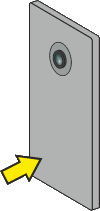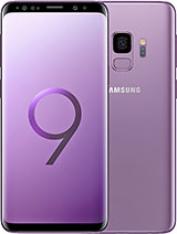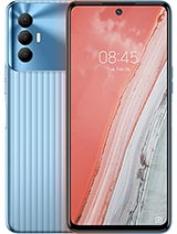Where To Buy
Where To Buy
OnePlus 8 5G UW (Verizon) vs Samsung Galaxy S9 vs Tecno Spark 8 Pro
6.55" 8GB 128GB Android 10 vs 5.8" 4GB 256GB Android 8.0 vs 6.8" 6GB 64GB Android 11
Released: 2020, April 29 vs Released: 2018, March 09 vs Released: 2022, January 04
Specifications score
| Specifications score: | 5.4/10 4.8/10 2.9/10 |
| Specifications score for smartphones calculated as a summary of the next device components: chipset, RAM, storage, main camera, display, material, selfie camera, battery, sensors and some separated features like double SIM, sound jack, etc. It does not include network, because network compatibility mostly location-dependent. It also does not include software, because it makes very little difference which exact version of Android or iPhone runs on this device. It also does not takes in consideration brand, as brand value hard to calculate. It also ignores user ratings as user ratings are not available at the moment of smartphone release. Therefore, when choosing new gadget, those additional parameters should be considered as well. |
|
Value for money
| Value for money: | 9.4/10 4.2/10 3.4/10 |
| Value for money of smartphones calculated by dividing Specifications Score by price. The nature of this parameter is such, that cheap devices tend to have higher Value for Money than expensive ones. Therefore, it makes sense only to use this parameter while comparing devices with similar prices or similar Specification Scores. |
|
Hardware
Chipset 5.9/10 3.7/10 2.1/10

| Name: | Snapdragon 865 Exynos 9810 Helio G85 |
| Rank: | 26 67 116 |
| Chipset (SoC or System on Chip) is the most expensive and important part of device. It commits the bigger part of smartphone's specification score and value for money. But it is usually very hard to evaluate chipset based on typical info like number of cores and clock rate. Instead, we maintain a list of chipsets used in modern smartphones sorted by all available data including benchmark tests like AnTuTu and GeekBench. (Look below). |
|
| Number of cores: | 8 (1+3+4) 8 (4+4) 8 (2+6) |
| Number of cores is the number of microprocessors built in current chipset. Generally, the more cores the better. Number of cores defines the number of tasks that smartphone can process simultaneously. Most of the modern chipsets, both cheap and expensive have 8 cores. Also, cheap inefficient chipset can have more processors than expensive performent one. Therefore, this parameter alone is not very informative. |
|
| Max clock rate: | 2840 2900 2000 |
| Max clock rate is the maximum frequency at which microprocessor is running. One MHz, for example, means that processor makes one million cycles per second. Generally, the higher clock rate the better, but other factors should be considered as well. Some processors can perform only one action per cycle, while others can do two or more. Some chipsets have 1x3x4 architecture with one "fast" processor and seven "slow" processors, while other chipsets can have 4x4 architecture with four "fast" and four "slow" processors. Old, inefficient chipset can have higher clock rate than new efficient one. Therefore, this parameter taken separately is not very informative. |
|
| Technology process: | 7 nm 10 nm 14 nm |
| Technology process refers to the size of transistors and the distance between two transistors on a microprocessor. The smaller this parameter the better. Meaning, that more transistors can be packed on the same square. Nanometer means one billionth (1/1000,000,000) of a meter. Currently, the most advanced microprocessors use a 5nm technology process. This parameter is very unambiguous and allows easily separate high-end devices (5-7nm) from cheap devices that use old chipsets with 14-28nm process. |
|
| CPU: | Octa-core (1x2.84 GHz Kryo 585 & 3x2.42 GHz Kryo 585 & 4x1.8 GHz Kryo 585) Octa-core (4x2.7 GHz Mongoose M3 & 4x1.8 GHz Cortex-A55) - EMEA Octa-core (4x2.8 GHz Kryo 385 Gold & 4x1.7 GHz Kryo 385 Silver) - USA/LATAM, China Octa-core (2x2.0 GHz Cortex-A75 & 6x1.8 GHz Cortex-A55) |
| Central processing unit. The most important part of a chipset. Consists of several (usually 8) microprocessors each boards millions of transistors. |
|
| GPU: | Adreno 650 Mali-G72MP18 Mali-G52 MP2 |
| Graphic processing unit. Graphic processing unit process instructions related to graphics: rendering images, playing videos, etc. |
|
| AnTuTu benchmark score: | 601283 321731 195901 |
| AnTuTu is a Chinese software benchmark tool usually used to test smartphones performance. |
|
| GeekBench benchmark score: | 946 / 3494 686 / 2018 357 / 1279 |
| GeekBench is another benchmark tool usually used to test performance of smartphones. It separates single-core test results from multi-core tests. |
|
RAM 4.4/10 2.2/10 3.3/10

| RAM: | 8 Gb 4 Gb 6 Gb |
| RAM (Random access memory) is a fast temporary memory. This memory is used for running apps. When a smartphone is off all information from RAM is destroyed. RAM measured in GB. One GB approximately equals 1000,000,000 bytes and can be used for storing 800,000 pages of plain text (4,000 books). Modern smartphones typically have from 1 up to 12 GB RAM. The more RAM device has the better. On the other side, if you are not a gamer, you, probably, will never need more than 4GB. |
|
| Samsung Galaxy S9 has model variants with different memory sets: 4Gb 64Gb, 4Gb 128Gb Tecno Spark 8 Pro has model variants with different memory sets: 4Gb 64Gb, 4Gb 128Gb |
|
Storage 0.3/10 2.5/10 0.6/10

| Storage: | 128 Gb 256 Gb 64 Gb |
| Storage (internal memory or hard disc) is a (relatively to RAM)slow persistent memory. This memory is used for storing data like texts, images, videos. When a smartphone is off all information from Storage is saved. Modern smartphones typically have from 16 up to 256 GB of internal memory. The more memory device has the better. |
|
Software
| Operating system: | Android 10, OxygenOS 10.0 Android 8.0 (Oreo), upgradable to Android 10, One UI 2.1 Android 11, HIOS 7.6 |
| Some smartphone manufacturers like Xiaomi, Samsung, Huawei have developed their own operating systems. Those operating systems are Android-based and actually just provide a slightly different UI - user interface. Also, different manufacturers can have different sets of pre-installed apps. | |
Design
Material 8.3/10 8.3/10 3.0/10

| Front: | glass glass (gorilla glass 5) glass |
| Most modern handsets have a screen made of glass. Only some foldable devices have a plastic screen. |
|
| Back: | glass (gorilla glass 5) glass (gorilla glass 5) plastic |
| Most modern cheap and budget handsets have a back panel made of plastic. More expensive devices have an aluminum back panel. High-end flagships frequently have a back panel made from glass or ceramic. |
|
| Frame: | aluminum aluminum plastic |
| Most modern cheap and budget handsets have a frame made of plastic. More expensive devices have an aluminum frame. High-end flagships frequently have a frame made of steel. |
|
Dimensions

| Length: | 160.2 mm (6.31 inch) 147.7 mm (5.81 inch) 169 mm (6.65 inch) |
| Width: | 72.9 mm (2.87 inch) 68.7 mm (2.70 inch) 76.8 mm (3.02 inch) |
| Thickness: | 8 mm (0.31 inch) 8.5 mm (0.33 inch) 8.8 mm (0.35 inch) |
| On the graphic below you can see dimensions of smartphones compared one to another. If your display has PPI (pixel per inch) equals 96, the graphic below will show real sizes (except corner radius). | |
Weight

| Weight: | 180 gm (6.35 oz) 163 gm (5.75 oz) null gm (null oz) |
| Modern smartphones typically have weights from 150 to 250g. (Exception is a rugged smartphone that can weight up to 400 gram.) Cheaper smartphones usually are lighter than more expensive ones, as they are built from plastic, have less memory, have fewer camera sensors, fewer sensors, and so on. |
|
Main camera 4.2/10 4.1/10 1.3/10
Camera sensors

| Number of camera sensors: | 3 1 3 |
| Modern smartphones usually have a rear camera which consists of several cameras/sensors. Why smartphone cameras need multiple sensors? It is because of the smartphone's low thickness. Smartphones are very thin and cannot have pullout lenses. Therefore each camera sensor has its fixed focal length and angle. Ultrawide sensors have a smaller focal length. Telephoto sensors have a bigger focal length. The main camera sensor usually "wide" and its focal length somewhere in between telephoto and ultrawide. |
|
|
|
|
| Wide: | Yes Yes Yes |
| Phones usually have a wide-angle primary sensor. | |
| Focal length: | 25 mm 26 mm -- |
| Focal length is the distance from the focal point to the sensor. Wide-angle cameras have a focal length in a range between 22 and 30mm. | |
| Angle of view: | 69 ° 67 ° -- |
| The Angle of View (or The Field of View) is a value that describes how much of the scene will be captured by a camera shot. The maximum possible value is 180 °. Wide-angle cameras typically have Angle of View in a range between 60 and 85 ° |
|
| Image resolution: | 48 MP 12 MP 48 MP |
| Image resolution refers to the number of pixels on the photo. The more the better, but when two cameras are compared, pixel size should be considered as well. For example, a 10Mp camera with pixel size 2µm better than a 16Mp camera with a pixel of 1µm. Generally high resolution good for printing posters, but bigger pixels important when shooting in low light conditions. Because of this, cameras with high-resolution use pixel binning by default. Pixel binning means that several pixels joined in one. For example, a 48Mp camera with a pixel of 0.8µm turns into 12Mp one with 1.6 µm pixel. Today devices usually have image resolution from 5 up to 108Mp. |
|
| Pixel size: | 0.8µm 1.4µm -- |
| Pixels are tiny dots that image consists of. For example, an image with a resolution of 12Mp roughly contains 12 million pixels. The size of pixels (or photosites) is important because the bigger the photosite the more light can be captured by the sensor. Smartphones usually have pixel size in a range between 0.7 and 2.4µm. By using binning, cameras with high resolution can create super-pixels with a 4 or even 9 ratio. |
|
| Sensor size (diagonal): | 1/2.0" 1/2.55" -- |
| The bigger sensor the better. Meaning, the more light can go through and more quality photos can be captured. Especially in a low light condition. Sensor size is strongly related to resolution and pixel size. The larger the sensor, the higher can be the resolution and the bigger the pixel size. | |
| Aperture (f-number): | f/1.8 f/1.5-2.4 f/1.8 |
| Aperture, in simple words, is just a size of a hole through which light goes inside the camera. Aperture is expressed in f-numbers (f-stop numbers) and calculated as focal length divided by aperture diameter. A bigger aperture is better for shooting in low light conditions. A smaller aperture can produce more contrast pictures in daylight. The smaller the number after slash "/" the bigger the aperture. For example, an aperture with f/1.4 is bigger than an aperture with f/2.2. Smartphone devices usually have cameras with the fixed aperture in a range between f/1.4 and f/3.0. |
|
|
|
|
| Ultrawide: | Yes No No |
| Ultrawide cameras are used for shooting utra-wide angle panoramic photos. | |
| Focal length: | 14 mm |
| Ultrawide angle cameras usually have the focal length in a range between 10 and 18mm. |
|
| Angle of view: | 116 (ultrawide) ° |
| Ultrawide angle cameras typically have the Angle of View in a range between 90 and 120 ° |
|
| Image resolution: | 16 MP |
| Pixel size: | -- |
| Sensor size (diagonal): | -- |
| Aperture (f-number): | f/2.2 |
|
|
|
| Telephoto: | No No No |
| Telephoto cameras are used for shooting photos from a big distance. They usually have up to X3 optical zoom. |
|
| Focal length: | |
| Telephoto cameras usually have the focal length in a range between 50 and 80 mm. |
|
| Angle of view: | |
| Telephoto cameras typically have the Angle of View in a range between 25 and 40 ° |
|
| Image resolution: | |
| Pixel size: | |
| Sensor size (diagonal): | |
| Aperture (f-number): | |
|
|
|
| Periscope: | No No No |
| Periscope cameras are telephoto cameras on steroids. They have lenses that placed vertically in the smartphone body, resulting in that whole camera construction shape reminds periscope. They usually have up to X10 optical zoom. Periscope camera is expensive and its presence in a smartphone is a sign of a high-end device. |
|
| Focal length: | |
| Periscope cameras usually have the focal length in a range between 100 and 125 mm. |
|
| Angle of view: | |
| Periscope cameras typically have the Angle of View in a range between 15 and 25 ° |
|
| Image resolution: | |
| Pixel size: | |
| Sensor size (diagonal): | |
| Aperture (f-number): | |
|
|
|
| Macro: | Yes No No |
| Macro cameras are used for shooting photos from short distance. |
|
| Focal length: | -- |
| Angle of view: | -- |
| Image resolution: | 2 MP |
| Pixel size: | -- |
| Sensor size (diagonal): | -- |
| Aperture (f-number): | f/2.4 |
|
|
|
| Monochrome: | No No No |
| The Monochrome sensor is used to take black-white photos. Black-white photos are known to have better contrast. Some cameras actually allow saving black-white photos from monochrome sensors, while others use data from monochrome sensors to create more contrast color photos. |
|
| Focal length: | |
| Angle of view: | |
| Image resolution: | |
| Pixel size: | |
| Sensor size (diagonal): | |
| Aperture (f-number): | |
|
|
|
| Depth: | No No Yes |
| The Depth sensor is the only sensor that actually is not a camera. It is not used for shooting photos, but for discovering the exact distance to the object. Knowledge of the exact distance to the object allows other cameras (primary, ultrawide, telephoto) to make better photos. |
|
|
|
|
| Time of Flight: | No No No |
| Time of Flight (ToF) sensor is a kind of Depth sensor that uses infrared laser to measure the distance to the object. |
|
Main camera features
| OIS: | Yes Yes No |
| OIS (Optical Image Stabilization) is an image stabilization technology that uses hardware -- gyroscope that stabilizes moveable camera sensor in the moment of shooting photo. |
|
| AIS: | No No No |
| AIS (Artificial Intelligence Image Stabilization) is an image stabilization technology powered by AI. |
|
| IBIS: | No No No |
| IBIS - In Body Image Stabilization - stabilization technology from Apple. Also known as sensor-shift stabilization. |
|
| HDR: | Yes Yes Yes |
| HDR - High Dynamic Range - refers to the balance of the light and shadow on the image. In smartphone HDR, in the context of shooting photos, means, that in HDR mode camera takes automatically several photos and then uses software to combine them in the one with perfect light-shadow balance. | |
| AF: | No No No |
| AF - Auto Focus - in smartphone specs usually refers to CDAF - Contrast Detection Auto Focus - a cheap and relatively low quality auto focus technology. | |
| PDAF: | Yes Yes Yes |
| PDAF - Phase Detection Auto Focus - most widely used effective Auto Focus technology. It dedicates some pixels (photosites) of the primary camera sensor to be responsible for just focusing. | |
| DPAF: | No Yes No |
| DPAF - Dual Pixel Auto Focus - is the most advanced passive autofocus technology. DPAF has two photodiodes on every pixel in the sensor. Every pixel then serves two purposes: capturing images and focusing. Hence, the word Dual. | |
| Laser AF: | No No No |
| Laser Auto Focus is very fast autofocus that also works well in low light. Other autofocus technologies are passive, they rely on the light coming from the object, but Laser AF is active autofocus. | |
| Optical Zoom: | No No No |
| Every camera has digital zoom, based on software. Program crops image, then stretch remaining part in order to magnify it. But only telephoto cameras have optical zoom ability based on high-quality lenses. Some advanced smartphone models provide X10 optical zoom. |
|
| Hybrid Zoom: | No No No |
| Hybrid zoom is a combination of Digital and Optical zooms. Some advanced smartphone models provide X100 hybrid zoom. |
|
Main camera video
| Video resolution: | 4K 4K 1080p |
| In modern devices, video resolution varies from 720p to 8K video. The number means the width of a frame in pixels. Therefore, 8K means that the phone shoots video with a frame approximately 8,000 pixels wide. 720p and 1080p formats are known as HD (High Definition) and 4K and 8K are known as UHD (Ultra High Definition). |
|
| Number of frames: | 240 960 30 |
| Up to date handset gadgets can shoot video with frames per second from 15 up to 960. The most typical number is 30. Most TV programs, sport events, shows, and so on are captured with 30 fps. Hollywood movies are traditionally made with 24 frames per second. | |
| Slow motion: | Yes Yes No |
| In order to be able to create slow-motion clips, the camera should be able to shoot video with at least 60 frames per second. | |
| Super steady: | No No No |
| Some smartphones have the Super steady video mode that results in stabilized video with less blur and shakes. Usually, it is achieved with help of software that crops frames but some gadgets have special hardware like a gyroscope and a moveable sensor. | |
| Gyro EIS: | Yes Yes No |
| Gyro EIS refers to Gyro Electronic Image Stabilization. It means that smartphone has both software and hardware that work together and produce quality stabilized videos. |
|
| HDR: | No No No |
| Video HDR - High Dynamic Range - means that video simply has a high quality light-shadow balance. | |
Selfie camera 5.8/10 2.7/10 2.3/10
| Main as selfie: | No No No |
| Some smartphones use the main camera as a selfie exploiting different approaches: double displays, folding and motorized flip modules. Therefore such a selfie camera has the same parameters and features as the main camera. | |
| Pop up: | No No No |
| Some smartphones have manual or motorized popup cameras resulting in that there is no camera hole inside the display anymore. | |
| Number of sensors: | 1 (wide) 2 (wide and dedicated iris scanner camera) 1 (wide) |
| Some devices have more than one sensor in their front (selfie) camera module. Usually, the first sensor is a wide camera and the second is a depth sensor. | |
| Focal length: | -- 25 mm 26 mm |
| Angle of view: | -- 69 ° 67 ° |
| Image resolution: | 16 Mp 8 Mp 8 Mp |
| Front cameras in modern smartphones usually have image resolution from 2 to up to 24MP. | |
| Pixel size: | 1.0 µm 1.22 µm 0.8 µm |
| Sensor size (diagonal): | 1/3.06" 1/3.6" -- |
| Aperture (f-number): | f/2.0 f/1.7 f/2.0 |
| Video resolution: | 1080p 1440p 1080p |
| Frames per second: | 30 30 30 |
| HDR: | Yes Yes No |
| Flash: | No No No |
| Gyro EIS: | Yes No No |
Display 5.7/10 6.0/10 4.1/10

| Display type: | OLED OLED LCD |
| There are several types of smartphone displays. LCD - Liquid Crystal Display - uses the light-modulating properties of liquid crystals. TFT LCD - Thin Film Transistor LCD - provides better quality than LCD. IPS LCD - In-Place Switching LCD - is superior to TFT with wider viewing angles and lower power consumption. OLED - Organic Light Emitting Diode - is much better compared to LCDs because of their exceptional colors. AMOLED - Active-Matrix Organic Light-Emitting Diode - next generation of OLED with even better color quality. Super AMOLED - an even more advanced version of AMOLED with a touch screen built on the display itself. Super AMOLED screens are very thin and responsive. |
|
| Display size: | 6.55 inch 5.8 inch 6.8 inch |
| In modern phones display size usually varies from 5 to 7 inch. | |
| Display square: | 103.6 sm2 84.8 sm2 109.8 sm2 |
| Display to body ratio: | 88.7 % 83.6 % 84.6 % |
| The ratio of the screen area to the total surface area. Can be from 65 to 95 %. The bigger, the better. | |
| Display resolution: | 1080x2400 pixels 1440x2960 pixels 1080x2460 pixels |
| Modern devices have display resolution in a range of 480 x 800 to 1644 x 3840 pixels. The bigger, obviously, the better. | |
| Resolution ratio: | 20:9 18.5:9 -- |
| The ratio of the height resolution (for example, 2400) to the width resolution (for example, 1080). | |
| Display density: | 402 PPI 570 PPI 395 PPI |
| Display density is a ratio of the number of pixels to the smartphone display area in inches. It measured in pixels per inch. The bigger, the better. | |
| Display refresh rate: | 90 Hz -- -- |
| Refresh rate means how many times the display can update in one second. For example, 60Hz display updates 60 times per second. The bigger, the better. | |
| Display brightness: | -- -- -- |
| High brightness is very useful when using the smartphone under high lighting conditions, usually just under the direct sun. The more brightness can produce a phone the better. The typical brightness for budget phones is 300. Some more advanced gadgets can produce more than 500 and some high-end devices even more than 1000. | |
| Display protection: | -- Corning Gorilla Glass 5 NEG |

|
|
| Modern phone displays usually use corning glass for protection. The most widely used brand is Gorilla Glass. Gorilla Glass has versions from oldest to newest: 1, 2, 3, 4, 5, 6, Victus. This means, that 3 is better than 1 and Victus is better than 5. | |
Battery 3.5/10 2.7/10 3.9/10

| Battery type: | Li-Po Li-Ion Li-Po |
| Nowadays, devices use two types of batteries: Li-Ion and Li-Po. Li-Ion means Lithium Ion and Li-Po means Lithium Polymer. The difference between them is electrolyte type: Ion uses a liquid electrolyte, while Polymer uses a solid or gel electrolyte. Li-Po batteries are more expensive and less power efficient, but they are safer. Low-quality Li-Ion batteries can cause fire or even explode. Recently, only low-end cheap devices use Li-Ion batteries, while more expensive tend to use Li-Po. |
|
| Battery capacity: | 4300 mAh 3000 mAh 5000 mAh |
| Modern phone batteries usually have a capacity between 2000 and 7000 mAh. mAh is a shortcut for milliampere-hour and is a unit of electrical charge/capacity. For comparison, the most widely used AA batteries have the capacity of 2500 mAh. | |
| Fast charging: | 30 W 15 W 33 W |
| Some of the most advanced batteries have the ability to fast charge. The fast-charging measured in Watt and varies from 20 to 120. The bigger, the better. | |
| Wireless charging: | No Yes No |
| Some of the most advanced batteries have the ability to wireless charge. Wireless charging does not require connecting by cable. | |
| Reverse charging: | No No No |
| Some batteries can be used as power banks to charge other devices. | |
Sensors
| Ambient light: | No No No |
| Smartphones use an ambient light sensor to discover the amount of light present and adjust display brightness. Almost every smartphone has an ambient light sensor. They are so common that phones manufacturers don't include them in specs anymore. | |
| Proximity: | Yes Yes Yes |
| The proximity sensor detects proximity to objects. For example, when a user holds a phone near his ear, the smartphone's software knows it from the proximity sensor and turns off the display. | |
| Accelerometer: | Yes Yes Yes |
| The Accelerometer sensor detects the smartphone's movement. It is widely used by fitness apps to measure walked distance, burned calories, etc. | |
| Gyroscope: | Yes Yes No |
| The most noticeable use of the gyroscope is image and video stabilization. | |
| Compass: | Yes Yes No |
| The Compass (or magnetometer) senses the direction of Earth's magnetic fields. It is usually used by compass apps. | |
| Barometer: | No Yes No |
| Smartphones use the barometer sensor to detect changes in altitude. The data from the barometer sensor widely used by GPS apps. | |
| Color spectrum: | No No No |
| The color spectrum sensor detects ambient colors. The camera's software uses data from this sensor to produce more quality color photos. | |
| Face recognition: | No No No |
| Face recognition (or Face ID in iPhones) is a security sensor used to unlock a phone based on the user's face scan. | |
| Fingerprint: | Under display Rear mounted Side mounted |
| The fingerprint is a security sensor used to unlock the phone based on the user's fingerprint. There are four types of fingerprint sensors depends on location: under-the-screen, side-mounted, back-mounted, front-mounted. Front-mounted is an outdated type: modern smartphones don't use it. | |
Network

| 2g: | 850, 900, 1800, 1900 850, 900, 1800, 1900 850, 900, 1800, 1900 |
| 2g - second-generation cellular network launched in 1991. It was the first network with a word "generation" in its name. Preexisted networks were retrospectively called 1g - first generation. Some operators currently shutting down 2g networks, but some shutting down 3g still relying on 2g for backup. | |
| 3g: | B1, B2, B3, B4, B5, B6, B8 B1, B2, B4, B5, B8 B1, B5, B8 |
| 3g - third-generation cellular network launched in Japan in 1998. Was adopted worldwide during 2002-2008. | |
| 4g (LTE): | B1, B2, B3, B4, B5, B7, B8, B12, B13, B17, B18, B19, B20, B25, B26, B28, B30, B38, B39, B40, B41, B46, B48, B66, B71 B1, B2, B3, B4, B5, B7, B8, B12, B13, B17, B18, B19, B20, B25, B26, B28, B32, B38, B39, B40, B41, B66 |
| 4g - fourth-generation cellular network, successor to 3g and predecessor to 5g. Launched in 2009 in Finland and Sweden. Most widely used network today. It is important to ensure that the smartphone you are going to buy, has 4g bands used by your mobile provider. | |
| 5g: | N2, N5, N66, N260 |
| 5g - fifth-generation cellular network, successor to 4g and predecessor to 6g. Started to deploy worldwide in 2019, it is now presented in many countries, but the coverage is still very limited. | |
Network compatibility
|
|
|
|
| In the above table, you see frequencies/bands used by mobile networks carriers in the selected country. Those supported by the smartphone are green, and those that are not supported are red. Ideally, they all must be green in order to use the phone with this particular mobile provider. But, if some of them are red, it does not mean that this phone will not work. First, if your carrier has 4g support, you, probably, don't need 2g compatibility at all, as you will mostly use 4g, while rarely using 3g in case 4g is not available. Second, carriers have bands that they call "main" or "primary". Most of the time, you are using those primary bands. Therefore, in order to work, this smartphone should only be compatible with those main bands. When in doubt, call your provider and ask which bands should be supported in your locations. |
Miscellaneous

|
|
| Dual SIM: | Pre-installed Nano-SIM Single SIM (Nano-SIM) or Hybrid Dual SIM (Nano-SIM, dual stand-by) Dual SIM (Nano-SIM, dual stand-by) |

|
|
| Memory slot: | No microSDXC (uses shared SIM slot) - dual SIM model only microSDXC (dedicated slot) |
| Foldable: | No No No |
| In 2019 Samsung, Huawei and Motorola introduced foldable devices, that can be, yes, folded and then opened. |
|
| Water dust resistance (IP): | No No No |
| Some modern smartphones come with IP (Ingress protection) certificates. It looks like IP followed by two digits. The first digit is a test for protection from solid objects and dust, the second digit is a test for protection from water. For example, IP68 means that the smartphone was tested and has the highest level of protection for both dust and water. | |

|
|
| 3.5 mm audio jack: | No Yes Yes |
| Some manufacturers remove audio jacks from their high-end devices. Instead, they put BlueTooth headphones in the box. But when they lost customers should buy new expensive ones. |
|
| Stereo speakers: | Yes Yes Yes |
| FM radio: | No Yes Yes |
| GPS: | Yes, with dual-band A-GPS, GLONASS, BDS, GALILEO, SBAS Yes, with A-GPS, GLONASS, BDS, GALILEO Yes, with A-GPS |
| WLAN: | Wi-Fi 802.11 a/b/g/n/ac/6, dual-band, Wi-Fi Direct, DLNA, hotspot Wi-Fi 802.11 a/b/g/n/ac, dual-band, Wi-Fi Direct, hotspot Yes |
| Bluetooth: | 5.1, A2DP, LE, aptX HD 5.0, A2DP, LE, aptX Yes |
| NFC: | Yes Yes No |
| NFC - Near Field Communication - allows two NFC-enabled devices to communicate when they are close one to another. It is somehow similar to Bluetooth but there are differences. NFC works at a very small distance - less than 4 inches. Also unlike Bluetooth two NFC capable devices instantly start to communicate when putting close one to another. NFC technology is widely used by mobile payment processing. | |
| USB: | USB Type-C 3.1, USB On-The-Go USB Type-C 3.1 USB Type-C 2.0, USB On-The-Go |
| Colors: | Onyx Black, Polar Silver Midnight Black, Coral Blue, Titanium Gray, Lilac Purple, Burgundy Red, Sunrise Gold, Ice Blue Komodo Island, Interstellar Black, Winsor Violet |
F.A.Q.
| Question | Does OnePlus 8 5G UW (Verizon) have higher video resolution than Samsung Galaxy S9? |
| Answer | No, they are equal. |
|
|
|
| Question | Does OnePlus 8 5G UW (Verizon) have higher display resolution than Samsung Galaxy S9? |
| Answer | Yes, OnePlus 8 5G UW (Verizon) has higher display resolution. |
|
|
|
| Question | Does OnePlus 8 5G UW (Verizon) support more 4g bands than Samsung Galaxy S9? |
| Answer | Yes, OnePlus 8 5G UW (Verizon) supports more 4g bands. |
|
|
|
| Question | Does OnePlus 8 5G UW (Verizon) have higher display density than Samsung Galaxy S9? |
| Answer | No, Samsung Galaxy S9 has higher display density. |
|
|
|
| Question | Does OnePlus 8 5G UW (Verizon) have more camera sensors than Samsung Galaxy S9? |
| Answer | Yes, OnePlus 8 5G UW (Verizon) has more camera sensors. |
|
|
|
| Question | Does OnePlus 8 5G UW (Verizon) have more powerful chipset than Samsung Galaxy S9? |
| Answer | Yes, OnePlus 8 5G UW (Verizon) has better chipset. |
|
|
|
| Question | Does OnePlus 8 5G UW (Verizon) have longer life battery than Samsung Galaxy S9? |
| Answer | Yes, OnePlus 8 5G UW (Verizon) has longer life battery. |
|
|
|
| Question | Does OnePlus 8 5G UW (Verizon) have higher display to body ratio than Samsung Galaxy S9? |
| Answer | Yes, OnePlus 8 5G UW (Verizon) has higher display to body ratio. |
|
|
|
| Question | Is OnePlus 8 5G UW (Verizon) better than Samsung Galaxy S9? |
| Answer | Yes, OnePlus 8 5G UW (Verizon) is better. |
|
|
|
| Question | Does OnePlus 8 5G UW (Verizon) have bigger display than Samsung Galaxy S9? |
| Answer | Yes, OnePlus 8 5G UW (Verizon) has bigger display. |
|
|
|
| Question | Does OnePlus 8 5G UW (Verizon) have more sensors than Samsung Galaxy S9? |
| Answer | No, Samsung Galaxy S9 has more sensors. |
|
|
|
| Question | Does OnePlus 8 5G UW (Verizon) have higher image resolution than Samsung Galaxy S9? |
| Answer | Yes, OnePlus 8 5G UW (Verizon) has higher image resolution. |
|
|
|
| Question | Does OnePlus 8 5G UW (Verizon) have better display protection than Samsung Galaxy S9? |
| Answer | No, they are equal. |
|
|
|
| Question | Does OnePlus 8 5G UW (Verizon) have better camera than Samsung Galaxy S9? |
| Answer | Yes, OnePlus 8 5G UW (Verizon) has better camera. |
|
|
|
-2020.jpg)


